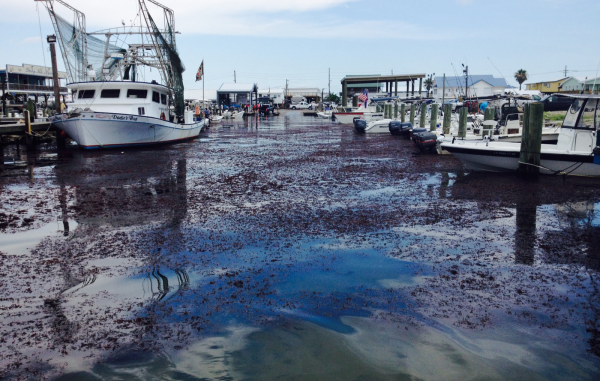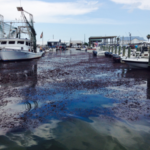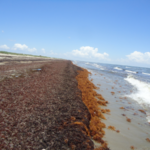
Sargassum also plaguing Texas beaches, biologists unsure how much remains offshore heading our way
The thick mats of seaweed on Grand Isle this summer are also plaguing beaches across Texas, and biologists are uncertain how long the unusually heavy accumulations will continue washing ashore.
Julia Lightner, a biologist with the Louisiana Department of Wildlife and Fisheries in New Orleans, said the floating seaweed is sargassum, and the amount of it coming ashore this summer is definitely out of the ordinary.
“It’s not unusual for us to see it on the beach. It’s just the large amounts we’re seeing that are unusual,” Lightner said. “It’s a very large amount of sargassum. I don’t know that we’ve ever seen this much.
“I’ve never seen this much and everybody I talked to has pretty much said the same thing.”
Texas beaches are also having a pretty big seaweed problem, and Lightner said she spoke with a Texas A&M contact who theorized growing conditions offshore were perfect for sargassum this spring.
“Now, with our southerly winds, it’s bringing all the sargassum to the beaches,” Lightner said, noting it started arriving at Grand Isle around mid-May. “We don’t know how much is out there, but this is definitely an abnormally high year for some reason.”
Texas biologists are studying satellite photos to try to determine how much of the seaweed, which is pushed by the wind and water currents, might still remain offshore.
“It looks like we are going to get a break, but I don’t know how long it’s going to last,” she said, noting the summer season’s persistent southerly winds would eventually push whatever might be floating out there northward towards the beaches.
Tommy Vidrine, who has fished at Grand Isle for years, said he had never seen as much seaweed as he has this year.
“In some places, it’s real thick. Sometimes it’s just floating here and there,” Vidrine said. “On certain tides it’s real bad. I’ve never seen that much inside the bay and on the beaches and the passes.”
Vidrine said one of his friends who went snapper fishing this weekend noted how thick it was offshore.
“He said it was like a big old blanket out there,” Vidrine said.
Lightner said she also heard a theory that the extremely cold winter that gripped much of the Gulf coast this year also might be responsible for this summer’s bumper crop of sargassum.
“It may be that we had north winds and such a hard winter that kept the sargassum to the south, where there were warmer temperatures and it was able to have a good growing season,” she said. “Then we started getting the southerly winds pushing it right towards us.”
Lightner noted the town of Grand Isle has been attempting to rake the beaches clean of the seaweed as it comes ashore, but the seemingly never-ending supply of sargassum is making it tough.
“They’ve been trying to stay ahead of it,” she said. “But I think they’re having a hard time.”




